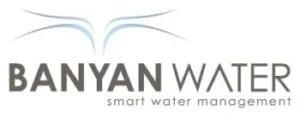There are great reasons to seek LEED certification, including financial incentives, PR, and employee happiness. LEED certification is a goal for many facilities managers and sustainability officers who seek to make their buildings more sustainable.
The U.S. Green Building Council has created a point system In order to measure whether a building meets goals for a LEED project. To receive certification, a building has to meet minimum requirements in a variety of areas; then gain points in categories that are in line with that project’s needs. Points are awarded for specific achievements in the following areas (all definitions courtesy of the USGBC’s LEED Credit Library).
Nine Categories of LEED Credits:
 LEED Points fall into 9 different categories
LEED Points fall into 9 different categories
Location & Transportation
This category rewards thoughtful decisions about building location, with credits that encourage compact development, alternative transportation, and connection with amenities such as restaurants and parks.
Sustainable Sites
The Sustainable Sites category focuses on the environment surrounding the building, awarding credits for projects that emphasize the vital relationships among buildings, ecosystems, and ecosystem services. It focuses on restoring project site elements, integrating the site with local and regional ecosystems, and preserving the biodiversity that natural systems rely on.
Water Efficiency
The Water Efficiency section addresses water holistically, looking at indoor use, outdoor use, specialized uses, and metering. The section is based on an “efficiency first” approach to water conservation.
Energy & Atmosphere
The Energy and Atmosphere category approaches energy from a holistic perspective, addressing energy use reduction, energy-efficient design strategies, and renewable energy sources.
Material & Resources
The Materials and Resources credit category focuses on minimizing the embodied energy and other impacts associated with the extraction, processing, transport, maintenance, and disposal of building materials. The requirements are designed to support a life-cycle approach that improves performance and promotes resource efficiency.
Indoor Environmental Quality
The Indoor Environmental Quality category rewards decisions made by project teams about indoor air quality and thermal, visual, and acoustic comfort. Green buildings with good indoor environmental quality protect the health and comfort of building occupants.
Innovation
Sustainable design strategies and measures are constantly evolving and improving. New technologies are continually introduced to the marketplace, and up-to-date scientific research influences building design strategies. The purpose of this LEED category is to recognize projects for innovative building features and sustainable building practices and strategies.
Regional Priority
Because some environmental issues are particular to a locale, volunteers from USGBC chapters and the LEED International Roundtable have identified distinct environmental priorities within their areas and the credits that address those issues. These Regional Priority credits encourage project teams to focus on their local environmental priorities.
Integrative Process
Beginning in pre-design and continuing throughout the design phases, identify and use opportunities to achieve synergies across disciplines and building systems.
Depending on the type of project that you are looking to certify, different options are available for gaining points in each of these areas.
In Getting LEED Credit for Water Efficiency, we dive into credits available for LEED water efficiency and some of the ways that projects earn those points.

